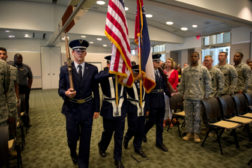Home » 9/11
Articles Tagged with ''9/11''
The disclosures by Edward Snowden over the past year have raised the public’s awareness about the U.S. Government’s surveillance tactics and capabilities to defend our nation against another 9/11 magnitude attack.
Read More
Security News -- Transportation Security
TSA Mission Museum Features Grim 9/11 Artifacts
October 24, 2012
Sign-up to receive top management & result-driven techniques in the industry.
Join over 20,000+ industry leaders who receive our premium content.
SIGN UP TODAY!Copyright ©2024. All Rights Reserved BNP Media.
Design, CMS, Hosting & Web Development :: ePublishing



